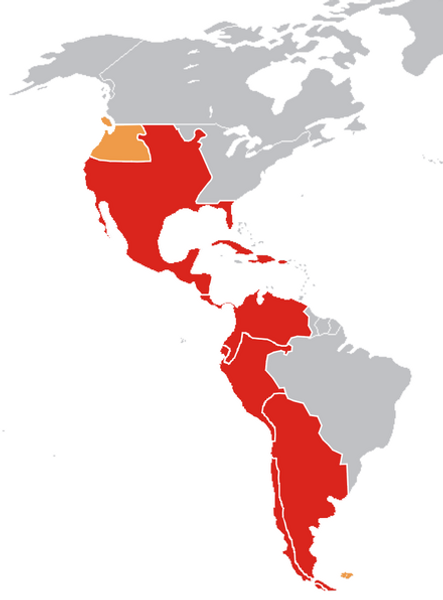<A>
“emancipation of Magian mankind”: *
KEY: under the Prophet Muhammad, 622-632 Expansion during the Patriarchal Caliphate, 632-661 Expansion during the Umayyad Caliphate, 661-750

<B>
Hansa in Baltic: *
see map

<C>
Teutonic knights in Slavonic East: *
After Christian forces were defeated in the Holy Land the Order moved to Transylvania (1211) to defend the SE of Hungary against the Kipchaks. In 1225 the Knights were expelled by King Andrew II after attempting to place themselves under papal instead of the original Hungarian sovereignty. In 1230, they launched the Prussian Crusade, an invasion of Prussia intended to Christianize the Baltic Old Prussians. The Knights quickly took steps against their Polish hosts and with the Holy Roman Emperor's support, appropriated Polish lands creating the independent Monastic State of the Teutonic Knights. They continued to appropriate Prussian territory, and subsequently conquered Livonia. Hostility with Poland grew over time, the Polish king expropriating their lands.
With the Christianization of Lithuania The Order theoretically lost its purpose. It now began to initiate campaigns against its Christian neighbours, the Kingdom of Poland, Lithuania & the Novgorod Republic. Their strong economic base enabled them to hire mercenaries from throughout Europe to augment their feudal levies; they also became a naval power in the Baltic Sea. In 1410, a Polish-Lithuanian army decisively defeated the Order and broke its military power at the Battle of Grunwald. Nonetheless their capital (Marienburg) withstood siege and the Order was saved from collapse. In the 16th century the order lost the support of the Holy Roman Emperor, and with the Reformation lost its leverage in Prussia. It was no longer a real political or military force though it continued to exist as a charitable institution until 1810.
<D>
Spanish in America:*
The conquest of Mexico by Cortez in 1519-21 coupled with the conquest of Peru in the south by Pizarro in 1532-72 brought huge regions under Spanish control as well as vast streams of silver & gold flowing into the Spanish treasury. This allowed Charles & his son Philip to pursue their sturggles against Islam & the Protestants, France & England & the Netherlands. It also initiated a great age of inflation.

<E>
Empire of Charles V: *
Charles V held many titles & principalities in Europe proper (Duke of Burgundyfrom 1506; King of Spain from 1516; Holy Roman Emperor, King of Italy & Archduke of Austria all from 1519). He also held vast lands in S and N America & Asia (notably the Philippines). His wealth, power, titles &lands led to fears in Europe of a universal monarchy. Charles faced constant hostility form Francis I of France as well as many of the German prices whom he supposedly ruled. The Empire was split by the Reformation of Luther, & Charles also faced a determined Islamic threats in N Africa as well as the Mediterranean.
MAP

<F>
facades Burgundian & Provencal cathedrals (Arabian v Nordic prime feeling): *
Vézelay, Burgundy: the original Benedictine abbey was destroyed by Moorish & Norman raiders in the 8th century; re-founded in the 9th century under the guidance of an affiliate of the Benedictine order of Cluny. The town stood at the embarkation point on the pilgrim’s route to Santiago de Compostela (NW Spain) & benefitted from this traffic. It achieved fame when its monks claimed to have found the tomb & relics of Mary Magdalene. To accommodate the influx of pilgrims a new abbey was begun 1104, inaugurated by Pope Innocent II in 1132. In 1146 Saint Bernard preached to King Louis VII there promoting a 2nd crusade. Richard I & Philip II of France met & spent 3 months at the Abbey in 1190 before leaving for the Third Crusade. And in 1166 Thomas Becket (in exile), chose Vézelay to announce the excommunication of Henry II supporters (and an implicit threat to the English king!).

The tympanum of La Madeleine de Vézelay (above) is different from its counterparts across Europe. From the beginning, its tympanum was specifically designed to function as a spiritual defense of the Crusades and to portray a Christian allegory to the Crusaders' mission.
nave (to the right)- note the Moorish voussoirs in alternating red and white

Arles Provence: The sculptures (left) over the church's portal, particularly the Last Judgement, and the columns in the adjacent cloister (lright), are considered some of the finest examples of Romanesque sculpture. The tympanum refelcts a strong geometric feeling; the delicate double columns of the cloister echoe the thin Moorish columns of the Alhambra.


<G>
Strasberg Minster (elements of Arabian v Nordic): *
The famous west front, decorated with thousands of figures, is a masterpiece of the Gothic era. While previous façades were certainly drawn prior to construction, Strasbourg has one of the earliest façades whose construction is inconceivable without prior drawing. The organization of the façade appears to be random but it has been suggested that it was designed using a series of rotated octagons. Besides this element there is a strong feeling for the vertical in the tower which has a high degree of linearity. The rose window housed just above the west portal is an example of Gothic use of light combined with an amazing circular design.



<H>
Freiberg Cathedral (dominate Gothic feeling): *
exterior view- the pitched roof rises steeply emphasising the vertical thrust of the church

below: the Large Hall, its columns are decorated with statues of the "Ten Virgins" from a biblical parable about the return of Christ. The statues are made of limewood and were carved by local artists between 1510 and 1520.

below: at the opposite end of the cathedral, the Great Organ by Gottfried Silbermann faces the altar.

below: view of the Dom St. Marien's ceiling, 20 meters or 66 feet above the cathedral's floor

<I>
pointed arch: *

right: Reims Cathedral, Notre-Dame de Reims, 12th - 13th Century.

<J>
horseshoe arch:*

Gate of Justice- Alhambra Granda Spain
